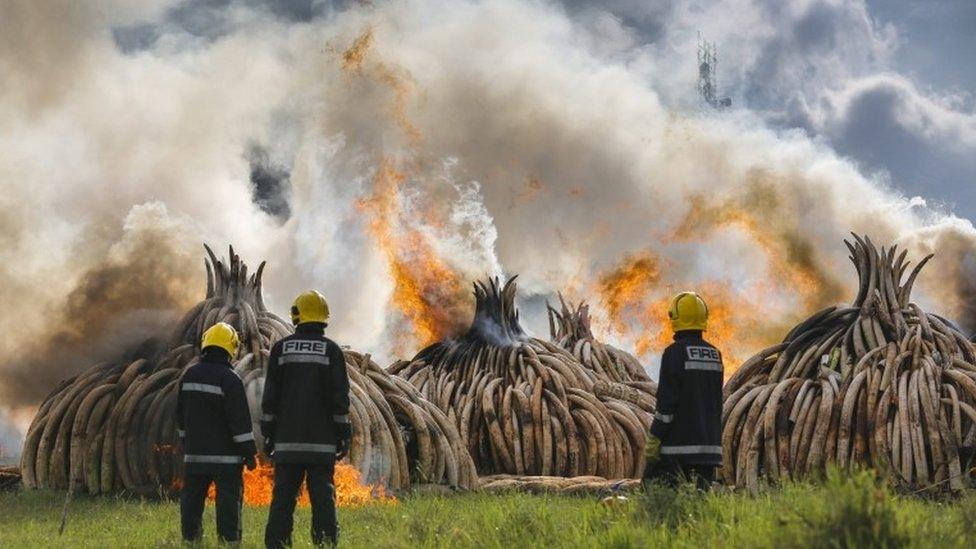Pictures: 100 tonnes of poached ivory set on fire in Kenya
- Published

A big meeting's been taking place in Kenya, east Africa, to talk about the problem of poaching. It's believed that around 30,000 elephants are killed every year in Africa by poachers wanting their tusks. (EPA)
Ivory is highly valued in parts of Asia where it is used in things like jewellery and statues. (EPA)
Kenya wants to show it's doing something about the issue. So the authorities have decided to set fire to 105 tonnes of elephant tusks and 1.35 tonnes of rhino horns. They've been recovered from poachers and smugglers. (EPA)
The Kenya Wildlife Service says this is the largest single destruction of ivory in history. It's hoped that it will help to send a message to poachers. (Reuters)
But not everyone agrees that the tusk burning is a good idea. They reckon it could make the poaching problem worse and might lead to people paying even more for ivory. Kenya has called for a total ban on buying and selling tusks and horns, to help stop the possible extinction of elephants and rhino in the wild. (AFP)
- Published3 January 2016
- Published19 October 2015
